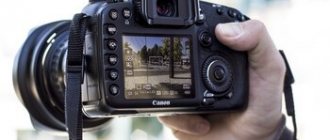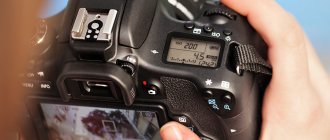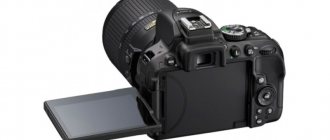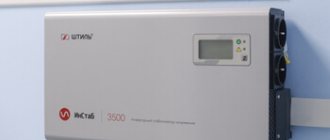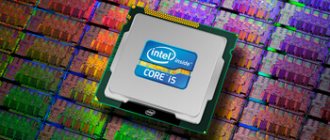Digital SLR cameras are used by both professionals and beginners.
This is the most popular and popular section of photographic equipment in 2021. What to consider when choosing such a device and which models have won the trust of experts and buyers - we will tell you in the article below.
The presented rating in terms of price/quality ratio will help when purchasing and will indicate the advantages and disadvantages of each participant.
Rating of the TOP 20 best SLR cameras of 2021
| Place | Name | Price |
| TOP 4 best SLR cameras by price/quality for 2021 | ||
| 1 | Nikon D3500 Kit | Find out the price |
| 2 | Canon EOS 2000D Kit | Find out the price |
| 3 | Pentax K-1 Mark II Body | Find out the price |
| 4 | Nikon D5600 Kit | Find out the price |
| TOP 4 best DSLR cameras for beginner photographers | ||
| 1 | Nikon D5300 Kit | Find out the price |
| 2 | Canon EOS 200D Kit | Find out the price |
| 3 | Nikon D5200 Kit | Find out the price |
| 4 | Canon EOS 250D Kit | Find out the price |
| TOP 4 best professional SLR cameras | ||
| 1 | Canon EOS 1D X Mark III Body | Find out the price |
| 2 | Nikon D850 Body | Find out the price |
| 3 | Canon EOS 5D Mark IV Body | Find out the price |
| 4 | Nikon D780 Body | Find out the price |
| TOP 4 best full-frame SLR cameras | ||
| 1 | Canon EOS 6D Mark II Body | Find out the price |
| 2 | Nikon D750 Body | Find out the price |
| 3 | Canon EOS 6D Mark II Kit | Find out the price |
| 4 | Pentax K-1 Mark II Kit | Find out the price |
| TOP 4 best inexpensive DSLR cameras | ||
| 1 | Canon EOS 1300D Kit | Find out the price |
| 2 | Canon EOS 750D Kit | Find out the price |
| 3 | Canon EOS 77D Body | Find out the price |
| 4 | Canon EOS 850D Body | Find out the price |
The best models for beginners
They feature primitive settings and automatic modes that simplify use. A large set of subtle options is inappropriate. Users note in their reviews that simple, budget devices are a godsend for “photo training.” Afterwards you can get a more impressive model.
Nikon D3400 Kit
The characteristics of the SLR camera, which comes with a Kit lens, are compared with professional ones. In addition to the main AF, there is an additional hybrid electronic rangefinder that allows you to automatically determine the distance between you and the object, without the need to approach it. Wide dynamic range allows you to make photos as realistic as possible. The matrix is made using CMOS technology. It is cheaper, consumes less energy, and has clearer white balancing.
The stated resolution of 24.2 megapixels is impressive, which gives scope for image processing on a PC, for example, high-quality printing on A3 format and even more. The shooting speed is 5 frames per second. There is a timer. Final photo format: JPEG, RAW. You can shoot video in Full HD resolution. Data exchange is carried out via USB, HDMI or Bluetooth wireless module. The standard lens included in the kit allows you to start working immediately after purchase. All you have to do is buy a memory card.
The device runs on one battery with a capacity of 1200 mAh. Total weight with battery, lens, memory card – 653 g.
Advantages:
- Convenient control;
- Capacious battery;
- Image stabilization;
- Video recording, built-in microphone;
- Excellent ergonomics;
- Silent focusing.
Flaws:
- There is no auto-rotate screen function;
- No screwdriver.
The D3400 series SLR camera has numerous positive reviews from novice users about the ease of the interface, the presence of a built-in training program, and all kinds of tips. When purchasing, it is recommended to carefully check the series number, since not all models have a stabilizer in the lens - a necessary option for beginners.
Canon EOS 2000D Kit
The entry-level representative is equipped with almost everything that is required during normal shooting. Suitable for training and skill development. It comes complete with the lens, so it doesn’t burden you with additional searches for suitable elements.
Equipped with a CMOS matrix with a resolution of 24 megapixels. A special feature of the model is intelligent adjustment. It is enough to turn on the appropriate mode, the device will select the optimal parameters for obtaining high-quality photographs. Another bonus is Wi-Fi support. Sharing photos will become much easier and faster.
Traditional functionality includes automatic white balance, red-eye reduction, and face focusing. Shutter speed can be adjusted manually. Shooting speed – 3 frames per second. Users note that one battery charge lasts approximately 500 frames. The weight with battery is only 475 g. This is lower than that of the previous nominee from the rating. The dimensions allow you to take it with you on a trip and wear it for a long time.
Advantages:
- Good opportunities for creativity;
- Availability of Wi-Fi module;
- Sufficiently capacious battery;
- Compact, lightweight;
- Price.
Flaws:
- There is no touch screen.
How to choose a DSLR camera?
When purchasing a DSLR camera, consider the following points::
- Frame . It should be durable and tactilely pleasant, preferably protected from dust and moisture. Pay attention to the weight and how comfortable it is to hold the device with one hand.
- Battery capacity . Reflected in the number of pictures you can take per charge.
- Connections . Modern models are increasingly equipped with wireless communication modules, which speeds up and simplifies the process of data exchange.
- Screen . The size, brightness and its position should ensure comfort of use. The image needs to be clear, the brightness should be enough to use the device outdoors, and the rotating mechanism will allow you to set the desired angle.
- Permission . Reflected in the number of points. The more there are, the higher the quality of the images, the better the details are reflected.
- Focus . Helps to achieve image clarity, can be either manual or automatic with the ability to manually adjust.
- Stabilization . If you often shoot objects in motion, this is a must-have option for your camera. It will not allow the frame to blur, including due to hand shaking.
Choosing a DSLR camera. What should a novice photographer pay attention to?
So, the decision to purchase has been made. But the diversity of the DSLR market will baffle any beginner. Which model is right for you? What parameters should you pay attention to?
Sensor, ISO and Image Stabilizer
Matrix (sensor) is a structural part of the camera that converts the light flux falling on it into electrical signals (bits). The sensor is a microcircuit with photosensitive diodes - pixels, the number of which determines the image resolution, detail and noise level.
Professionals advise not to chase a large number of pixels if you do not intend to print posters with photographs. For amateur photography, a camera with a sensor size of 12-24 megapixels is sufficient. The sensitivity of the matrix is indicated by the abbreviation ISO. The lower the ISO number, the better the quality of the frame. Manufacturers produce cameras with a range from 50 to 204,800 units. However, it is worth considering that a high ISO value causes graininess in the image, which will not decorate the photo.
Image stabilizer is sometimes built into the camera body rather than the lens. Its presence helps to avoid blurry frames when shooting without a tripod.
Optics
The main advantage of DSLR cameras is the ability to use different optics. There are six types of interchangeable lenses:
- whale (universal);
- portraits;
- wide angle;
- macro;
- long-focus (telephoto lenses);
- fish eye.
Most amateur cameras are equipped with universal lenses with a focal length of 18-55 mm. The viewing angle of such a lens is comparable to the viewing angle of the human eye.
What are the differences between a DSLR and a mirrorless camera?
DSLR cameras have more mechanical parts and are susceptible to even minor shocks . Such a device consists of two parts - the main body and the lens.
After the light passes through the lens and diaphragm, it hits a translucent mirror. The image is divided into two parts. The first is displayed on the viewfinder, and the second goes to the focusing system, after which it is reflected on the matrix. This is the photograph.
A mirrorless camera is a symbiosis of a DSLR and compact devices . Light is also output to the matrix, but the image is reflected on the screen after processing by the processor.
Sigma SD1 Merrill Body
The top SLR cameras of 2021 continue with the model from Sigma. This is a device in the mid-price segment, which can be found at a price of 66,869 rubles. Despite the rather high cost by DSLR standards, the manufacturer recommends it for beginners. Here, too, the kit does not include replacement optics - you will have to purchase it separately.
The number of useful pixels is 14.8. Matrix type CMOS, with crop factor 1.5. The maximum level of photographic resolution is 4704x3136 with a color rendering depth of 36 bits. ISO settings range from 100 to 3200. The built-in flash illuminates objects at a distance of up to 11 meters. There is a built-in timer in the settings. The functional TLL optical viewfinder has viewing angles of up to 98% with the ability to be duplicated on a 3-inch LCD display. Phase detection autofocus can also work in manual mode.
The camera only supports CompactFlash memory cards. The image is digitized in 3 JPEG and RAW formats. Its own power supply has a capacious resource for 400-500 photographs. Video filming and sound recording are not provided.
A pleasant surprise is the presence of a connector for the remote control and a mount for various tripods. The kit includes a removable battery and charger, a cable for connecting to a PC and a CD with software.
- light weight, only 700 g;
- good delivery set;
- presence of a connector for a remote control;
- classic case;
- excellent assembly;
- high-quality matrix;
- acceptable dimensions.
- quite high price;
- takes a long time to copy to external media;
- Poor shooting in low light conditions.
Prices for Sigma SD1 Merrill Body:
Fujifilm FinePix S5 Pro Body
At one time it produced film cameras, this is what ensures its high recognition in the digital era. The cost of the device is 52,900 rubles. This DSLR is equipped with a Nicon F mount, only the body is included, without a kit lens. The classic CCD matrix provides a resolution of 12 megapixels and a crop factor of 1.5. In addition to the built-in flash and hot shoe, the model has a sync contact and i-TTL. The presence of a mirror viewfinder provides a 95% viewing angle, which is duplicated on a 2.5-inch screen. Reliable, time-tested phase autofocus allows you to easily “catch” faces or individual objects.
The device supports two types of memory cards. The image is digitized in 3 JPEG and RAW. The battery of our own production has a capacity of 1500 mAh, the connector of the battery pack is MV-20.
The camera, like its more expensive analogues, cannot record video and sound. This option is available to more multimedia-oriented devices, while this model is positioned as a semi-professional one.
The durable metal housing has a tripod mount at its base. The package also includes a carrying strap, a bayonet cap and several other necessary and useful things. The weight of the equipped device is 920 grams. When choosing among semi-professional cameras, you should take a closer look at the proposed model.
- excellent dynamic range;
- good color rendering;
- metal case;
- capacious battery;
- bayonet mount from Nikon;
- convenient viewfinder;
- good viewing angles;
- high quality matrix.
- no Russification;
- slow software operation;
- The resolution is not enough for high-quality micro photography.
Fujifilm FinePix S5 Pro Body prices:
